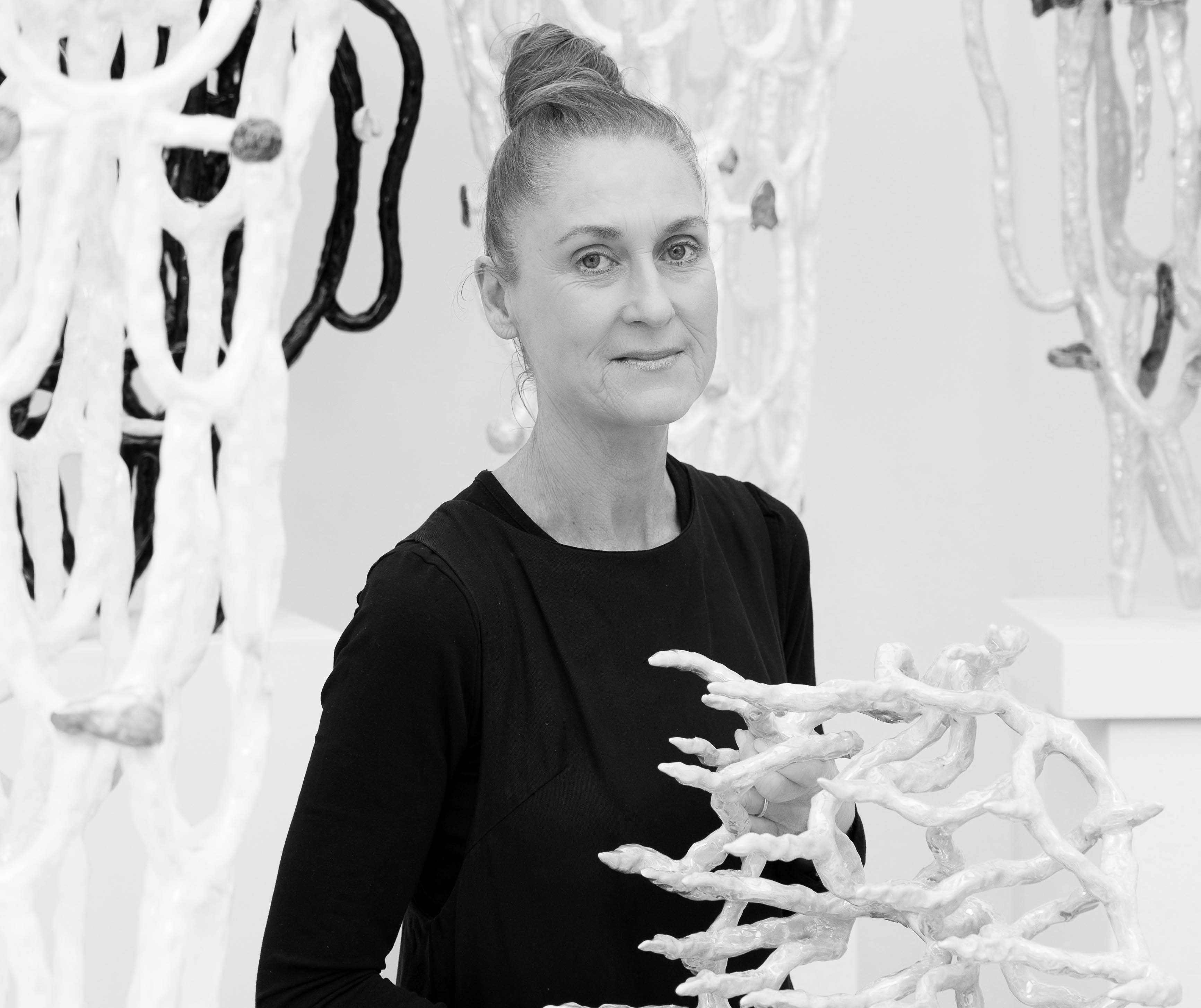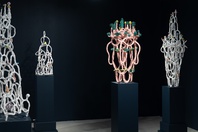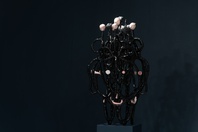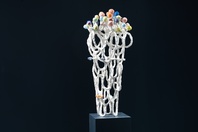Lynda Draper
Dhawaral Country, Thirroul, New South Wales
2023
Displayed 2023 at Campbelltown Arts Centre

Lynda Draper
Born 1962, Gadigal Country, Sydney.
Lives and works Dhawaral Country, Thirroul, New South Wales
Lynda Draper is an artist who primarily works in the ceramic medium. Her practice explores the intersection between dreams and reality, shaped by fragmented images from her surrounding environment, recollected memories, and an interest in material culture. Draper is interested in the relationship between the mind and the material world, and the related phenomenon of the metaphysical. Creating art is a way of attempting to bridge the gap between these worlds.
Draper has been the recipient of the 2019 Sidney Myer Fund Australian Ceramic Award, the 16th Gold Coast International Ceramic Art Award, Fisher’s Ghost Art Award, and the 54th Acquisition Award MIC, Faenza, Italy. Her works are held in significant national and international collections, including the National Gallery of Australia, International Museum of Ceramics, Faenza, Italy, Renwick Gallery, Smithsonian American Art Museum, Washington, IAC Collection FLICAM Museum, Fuping, China, Shepparton Art Museum, The Myer Foundation, Campbelltown City Council Collection, HOTA Collection, the University of Wollongong, and Artbank.
Photograph: Docqment Photography
Artist text
by Jaime Tsai
Only night and silence were capable of giving a sacred character to the bond that unites us.
Georges Bataille (1)
In 1937, the dissident surrealist Georges Bataille formed a secret society. Every new moon they would meet deep in a forest, under a tree struck by lightning, and practise rituals and mediations. On the precipice of global war, and with fascism and capitalism polarising populations more than ever before, the group had no leaders and one goal: the creation of a sacred community.
Today, we live in similarly precarious times. At every turn, forces out of our control threaten to tip the balance of the world into complete chaos. Fires, floods, drought, war, and pestilence are the new normal. The new normal is biblical. In uncertain times, Bataille understood the urgency of creating a sacred space for connection and communion. Few theistic or pantheistic spaces like this exist today, but Lynda Draper’s Talismans for Unsettled Times (2023) aspires to the task. Set in a deep blue space redolent of a night sky, a large series of Draper’s ethereal ceramics glimmer like a galaxy suspended. In this wondrous sacred space, we are invited to meditate, commune, and dream.
The Talismans invite imaginative projection, and exploit the human tendency to see patterns in inanimate objects. Some evoke tiaras, genie bottles, and celestial bodies, while others conjure surreal portraits. All made in the last decade, the ceramic objects were slowly and lovingly hand-built by coiling or pinching paperclay. Draper leaves the impression of her fingertips on the spinal edifices of these ceramics, drawing an uncanny analogy between the suppleness of skin and the rigidity of bone, between the fragility and resilience of her medium, and her species. Although sketches are part of Draper’s creative process, the structures evolve intuitively, and, unlike traditional ceramics, they are always partial and unfinished at the moment of firing. The Talismans take months, even years, to complete. Draper returns to them repeatedly, joining parts, adding shapes and coloured glazes, and firing. This is the ‘talismanic’ power of ceramics for Draper; in a period characterised by crises, and in which productivity and efficiency are valued above all else, the slowness of hand-crafting is both meditative and reparative. Likewise, the spectator is invited to ask what magical resonance each talisman might hold for them: Good health, luck, or protection? Or, might they help to focus the mind, divine eternal truths, or renew waning energies?
Draper describes the exhibition as a kind of votive offering: a collection of objects placed in a sacred space to intercede between human and non-human forces. A votive offering recognises the interdependency of all things in the universe, and the artist who offers it, their role in mediating a fragile ecology. The organisation and display of Draper’s ceramics is accordingly constellular, rather than traditionally museological. Instead of proposing hierarchies and differences, Talismans for Unsettled Times encourages connection as the interpretative lens through which we see the world and our place in it.
(1) Georges Bataille, ‘On an Area of Marshy Ground...’, March 1937, in Alastair Brotchie and Marina Galletti (eds.), trans. John Harman and Natasha Lehrer, The Sacred Conspiracy: The Internal Papers of the Secret Society of Acéphale and Lectures to the College of Sociology, Atlas, London, 2018, p.179.
Auslan - Lynda Draper
2min
About the work of Lynda Draper in The National 4.
Artist's acknowledgements
Lynda Draper is represented by Sullivan+Strumpf, Sydney, Melbourne and Singapore, and Galerie Lefebvre & Fils, Paris, France.
The artist thanks Emily Rolfe, Sullivan+Strumpf, Jaime Tsai, Isabelle Morgan and the C-A-C team, as well as artwork lenders: Jane Vicars, Ignatius Wilson, Melinda and Simon Wright, Bella and Tim Church, Leslie Stern, Ali Yeldham and Western Sydney University.


